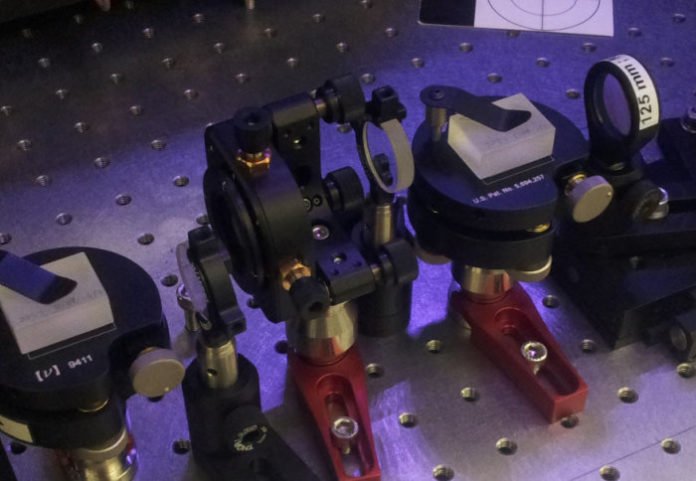In quantum mechanics, objects can behave like both particles and waves. The objects can be here and there at the same time. Such counterintuitive behavior is typically confined to the microscopic realm and the question why don’t we see such behavior in everyday objects?
Now, A team of researchers from the UK and Australia has developed a technique that helps them understand the boundary between the quantum world and our everyday classical world.
The technique generates such behavior in a motion of a tiny that can be seen with naked eye.
Project principal investigator, Dr. Michael Vanner from the Quantum Measurement Lab at Imperial College London, said: “Such systems offer significant potential for the development of powerful new quantum-enhanced technologies, such as ultra-precise sensors, and new types of transducers.
“Excitingly, this research direction will also enable us to test the fundamental limits of quantum mechanics by observing how quantum superpositions behave at a large scale.”
Hitting drums produces vibrations. Hitting a drum with a drumstick causes it to rapidly move up and down. In the quantum world, a drum can vibrate and stand still at the same time. However, generating such quantum motion is very challenging.
Lead author of the project Dr. Martin Ringbauer from the University of Queensland node of the Australian Research Council Centre for Engineered Quantum Systems, said, “For this, you need a very special kind of drumstick in order to create quantum vibration.”
“We adopted a trick from optical quantum computing to help us play the quantum drum. We used a measurement with single particles of light—photons—to tailor the properties of the drumstick.”
“This provides a promising route to making a mechanical version of Schrodinger’s cat, where the drum vibrates and stands still at the same time.”
These experiments have made the first observation of mechanical interferences fringes, which is a crucial step forward for the field.
Scientists are now working hard to improve their technique and operate the experiments at temperatures close to absolute zero where quantum mechanics is expected to dominate.
The details of their research are published today in New Journal of Physics.
